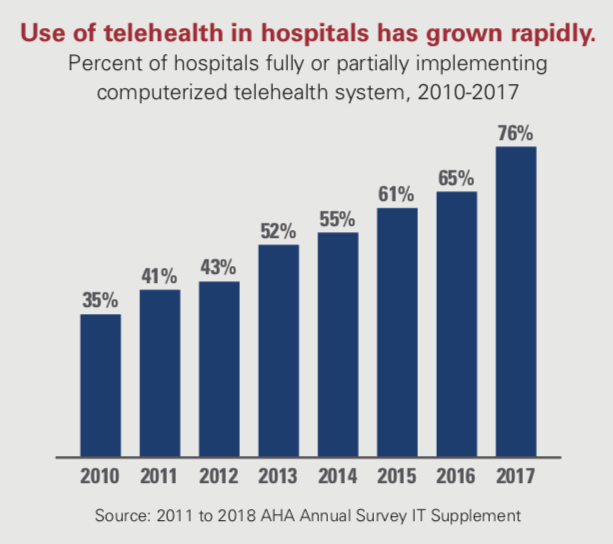The state of telehealth – 2019 update
There’s no denying that the use of telehealth by hospitals and health systems has grown tremendously over the past 10 years. But the system which seeks to reduce healthcare costs for patients and take up less of doctors’ valuable time, still has its flaws.

Not all practices are created equal
It was estimated that 7 million people would use telehealth services in 2018, with 65% of interactions being done on mobile phones. The telehealth industry is a multi-billion dollar industry, with 48 states requiring payer coverage. Despite availability and promotion of telehealth, an article from Forbes claimed only 15% of physicians worked in practices that actually used telehealth. Patient interaction on telehealth platforms was especially low at small practices, suggesting they don’t have the resources they need to effectively use the platforms.
Resistance from patients
Beside the fact that there’s still a barrier for providers to use telehealth, there are still concerns among patients as well. Though one of the goals of telehealth is to save money, it’s been found that patients can actually end up spending more by using telehealth in addition to – not instead of – face-to-face visits. The convenience of telehealth could also encourage patients to seek care for minor illnesses that they wouldn’t normally go to the doctor for. Another problem is misdiagnosis. Since telehealth visits are through a screen, misdiagnoses could increase. This could also end up increasing costs for the patients if they have to go back to see a doctor in person to confirm the diagnosis or treatment.
The need for telehealth training
One physician suggested that there should be a specialization for physicians who exclusively practice online, which he called a “medical virtualist.” Since treating a patient over a computer screen is different than seeing a patient in person, it makes sense that doctors should have special training for how to deliver the best care and make accurate diagnoses. We’ve talked a lot about the patient experience, and how important it is for doctors to build trusting relationships with their patients. Bedside manner can be a lot different over the phone or a webcam, so this is another facet doctors will have to address if they want patients to continue using their services.
Telehealth will undoubtably continue to grow and become more widely adopted, as we live more and more of our lives in a digital world. Both physicians and patients need to be educated on the proper uses of these services to insure time and money can actually be saved.

